Chervil’s missing from your spice rack, huh?
No sweat, we’ve got you covered with some top-notch swaps.
This herb’s like the sidekick in a ton of dishes, adding a gentle kick without taking over the spotlight.
Think of it as the quiet friend who makes everything better.
Now, not having it might seem like a big deal at first glance—especially if you’re halfway through a recipe. But that’s where we step in.
We’re here to guide you through picking the perfect stand-ins that’ll save your dish without missing a beat.
Stick around, and you’ll be a chervil-substituting whiz in no time.
What’s Chervil?

Chervil is an aromatic herb that belongs to the parsley family.
Its leaves are similar in appearance to parsley, but they have a delicate, lacy quality.
Chervil is native to the Mediterranean region, and it has been used in European cooking for centuries.
The herb has a mild, slightly sweet flavor, and it is often used to add a touch of refinement to dishes.
Chervil can be used fresh or dried, and it is a popular ingredient in garnishes, salads, and soups.
When choosing chervil at the grocery store, look for leaves that are bright green and free from brown spots.
The herb can be stored in the fridge for up to a week.
Chervil is a delicate herb, so it should be added near the end of cooking.
The 5 Best Substitutes for Chervil
If you can’t find chervil or don’t have any on hand, don’t worry.
There are several tasty substitutes that will work just as well in your recipe.
Here are the five best substitutes for chervil.
1 – Parsley
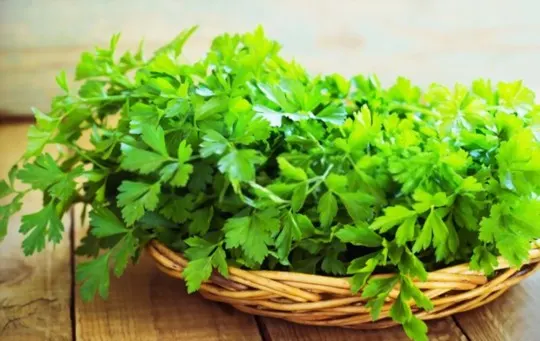
Parsley is a bright green, leafy herb that is commonly used as a garnish or seasoning.
While it is often used in small quantities, parsley can also be eaten in larger amounts as a cooked vegetable.
Parsley has a mild, slightly peppery flavor and a slightly fibrous texture.
When used as a garnish, parsley can add color and flavor to a dish.
It can also be used as a replacement for chervil in many recipes.
To substitute parsley for chervil, simply use an equal amount of parsley in the recipe.
Parsley can be found fresh, frozen, or dried at most supermarkets.
2 – Cilantro
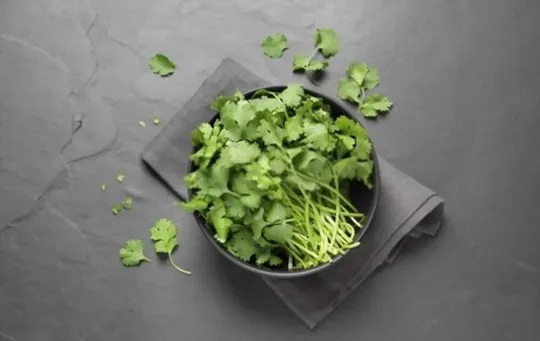
Cilantro is an herb that is often used in Latin American and Asian cuisine.
It has a distinctively fresh, bright flavor that can be used to add zest to salads, salsas, and soups.
Cilantro is also a popular ingredient in many Thai and Vietnamese dishes.
The herb is available fresh or dried and can be bought pre-chopped or in whole leaves.
When buying cilantro, look for bright green leaves that are free of brown spots.
Cilantro can be stored in the refrigerator for up to a week.
Cilantro has a slightly grassy taste with hints of lemon and lime.
The texture of the leaves is delicate and tender.
When cooked, cilantro will lose some of its flavors.
For this reason, it is often added at the end of cooking or as a garnish.
Cilantro can be substituted for chervil in most recipes.
To do this, use half the amount of cilantro called for in the recipe.
For example, if a recipe calls for 1 tablespoon of chopped chervil, use 1/2 tablespoon of chopped cilantro instead.
3 – Fennel

Fennel is an aromatic herb with a distinctively sweet flavor.
It is commonly used in cooking but can also be enjoyed raw.
Fennel has a crunchy texture and can be sliced or chopped and added to salads.
It can also be cooked and used as a flavoring for soups and sauces.
Fennel is often used as a substitute for chervil, as they have very similar flavors.
To substitute fennel for chervil, simply add it to dishes in the same proportion as you would chervil.
Fennel can also be used in place of celery in many recipes.
4 – Tarragon
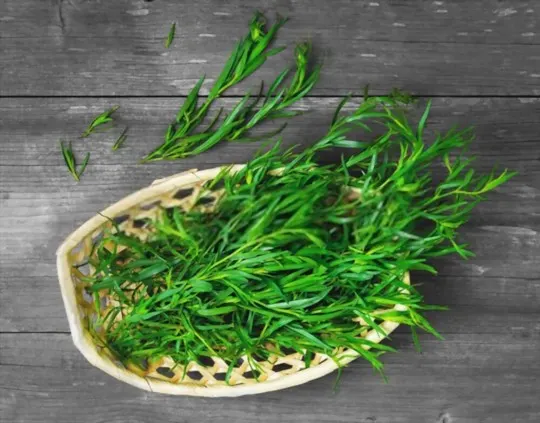
Tarragon is a herb that is related to chervil, with a similar taste and texture.
It has a slightly bitter taste with a hint of anise.
The leaves are long and slender and can be used fresh or dry.
Tarragon is commonly used in French cuisine and can be used to flavor chicken, fish, and vegetables.
It can also be used in salads or as a garnish.
One of the advantages of tarragon is that it can be substituted for chervil in most recipes.
This makes it a good option for those who are not able to find chervil or who do not like the taste.
Tarragon can also be grown at home, making it a convenient herb to have on hand.
5 – Dill
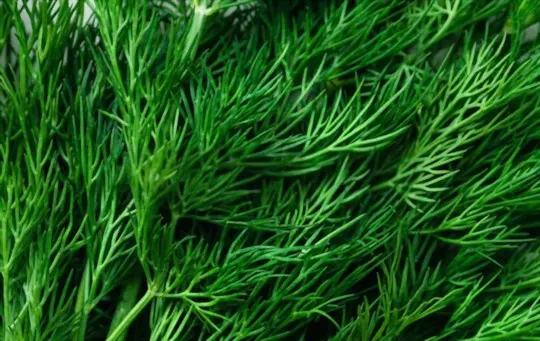
Few herbs are as versatile as dill.
Its delicately grassy taste enhances the flavor of fish, poultry, and vegetables, while its feathery leaves add a beautiful touch to any dish.
Dill’s versatility doesn’t stop there- it can also be used as a substitution for chervil.
Just like chervil, dill has a mild anise flavor with hints of lemon.
It also has a similar feathery appearance.
When substituting dill for chervil, use it in the same proportion as you would chervil.
Dill can be found fresh, frozen, or dried at most supermarkets.
Conclusion
In conclusion, there are many herbs that can be used as a replacement for chervil in cooking.
Parsley, cilantro, fennel, tarragon, and dill are all good options.
Each of these herbs has a similar flavor to chervil and can be used in the same proportion.
When substituting one of these herbs for chervil, it is important to keep in mind that they may have a slightly different flavor.
This is why it is often best to add them towards the end of cooking or as a garnish.
Choose the herb that you think will best complement the dish you are making.
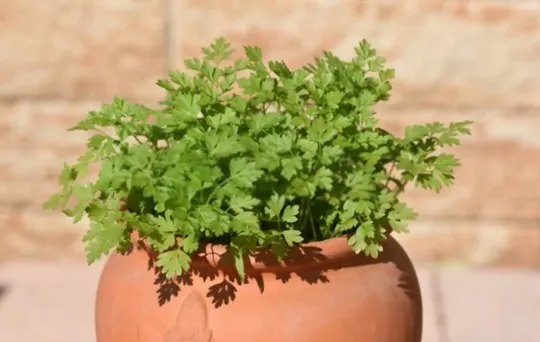
The 5 Best Substitutes for Chervil
Ingredients
- Parsley
- Cilantro
- Fennel
- Tarragon
- Dill
Instructions
- Pick your favorite substitute from the list above.
- Follow cooking directions for your selected substitute with the proper ratio of ingredients.

Andrew Gray is a seasoned food writer and blogger with a wealth of experience in the restaurant and catering industries. With a passion for all things delicious, Andrew has honed his culinary expertise through his work as a personal chef and caterer.
His love for food led him to venture into food writing, where he has contributed to various online publications, sharing his knowledge and insights on the culinary world. As the proud owner of AmericasRestaurant.com, Andrew covers a wide range of topics, including recipes, restaurant reviews, product recommendations, and culinary tips.
Through his website, he aims to inspire and educate fellow food enthusiasts, offering a comprehensive resource for all things food-related.

Leave a comment